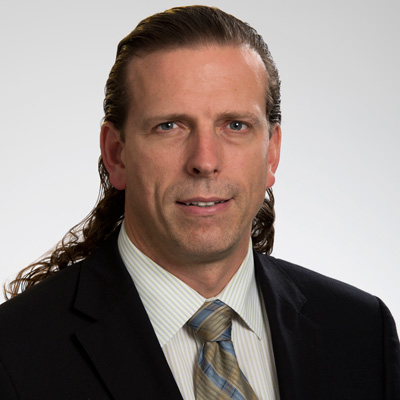
Dr. David Jaffray is the Head of Radiation Physics at Princess Margaret Cancer Centre, Director of TECHNA Research Institute and Executive Vice-President, Technology & Innovation at University Health Network. (Photo: UHN)
Cancer is now the leading cause of early death worldwide – yet research published in
The Lancet Oncology and also presented at the 2015 European Cancer Congress in Vienna, shows that more than 90 percent of the population in low-income countries lacks access to radiotherapy services to help treat it.
The data was compiled by a panel of international experts on the Lancet Oncology's Radiotherapy Commission to expand global access to radiotherapy, led by Dr. David Jaffray, Head of the International Secretariat of the Global Task Force on Radiotherapy for Cancer Control (GTFRCC).
Dr. Jaffray is the Head of Radiation Physics at Princess Margaret Cancer Centre, Director of TECHNA Research Institute and Executive Vice-President, Technology & Innovation at University Health Network.
Building capacity for radiotherapy
"There is a rapidly growing cancer burden worldwide and in many cases, radiotherapy is essential for effective treatment of the most common cancers seen in low-income and middle-income countries," says Dr. Jaffray.
"Even in high-income countries, radiotherapy is used in more than half of all cases of cancer to cure localized disease, palliate symptoms, and manage disease in incurable cancers."
"Yet, in planning and building treatment capacity for cancer, radiotherapy is frequently the last resource to be considered," he adds.
Radiotherapy treatment, also known as radiation therapy, is essential for the cure and palliation of most cancers including breast, lung, prostate, head and neck, and cervical cancers.
By 2035, more than 12 million people per year diagnosed with cancer would benefit from treatment
New estimates produced for the Commission find that in 2035, more than 12 million new cancer patients could benefit from radiotherapy treatment. Yet, worldwide access to radiotherapy is unacceptably low, with only 40 to 60 per cent of cancer patients having access to this vital treatment.
Experts on the Commission conclude that the lives saved and economic benefits of decreasing the burden of cancer care on health systems worldwide would far outweigh the cost of scaling up radiotherapy services.
The building of radiotherapy capacity will require a large initial investment – however, the report published on Sept. 26 states that the health and economic benefits will be realized in just 10 to 15 years.

Dr. Mary Gospodarowicz is the Medical Director, Princess Margaret Cancer Centre and co-investigator on the Global Task Force on Radiotherapy for Cancer Control.
(Photo: UHN)
"To justify the investment, we only need to look at the remarkable progress made in tackling the enormous challenges of HIV/AIDS and malaria," says Dr. Mary Gospodarowicz, Medical Director, Princess Margaret Cancer Centre and co-investigator on the GTFRCC, which was
launched at the Princess Margaret in 2014.
"This gives us the hope and confidence that the same success can be achieved with cancer control and radiotherapy."
The Commission analysis measures coverage of radiotherapy services worldwide and by country. It also includes new estimates for the future burden of cancer to 2035 and for the first time, calculates the costs and benefits of meeting the worldwide shortfall in resources and bridging the gap in access to effective treatment.
The work of the
Global Task Force on Radiotherapy for Cancer was coordinated by the Toronto Team supported by Tracey Lui from TECHNA and included Drs. Mike Milosevic, Brian O'Sullivan, Miller MacPherson and Danielle Rodin, radiation oncology resident and head of young leaders group
GlobalRT, who was highly involved in the investment framework working with Professor Rifat Atun from Harvard, lead author of the report.
Commission's call-to-action: Six key targets
By 2020:
- 80 per cent of countries to have comprehensive cancer plans that include radiotherapy.
- Each low- and middle-income country to create one new centre for treatment and training.
- 80 per cent of low- and middle-income countries to include radiotherapy services in their universal health coverage plans.
By 2025:
- A 25 per cent increase in radiotherapy treatment capacity.
- Low- and middle-income countries to train 7,500 radiation oncologists, 20,000 radiotherapy radiographers, and 6,000 medical physicists.
- US$46 billion of upfront investment to be raised to establish radiotherapy infrastructure and training in low- and middle-income countries (with help from international banks and the private sector)
